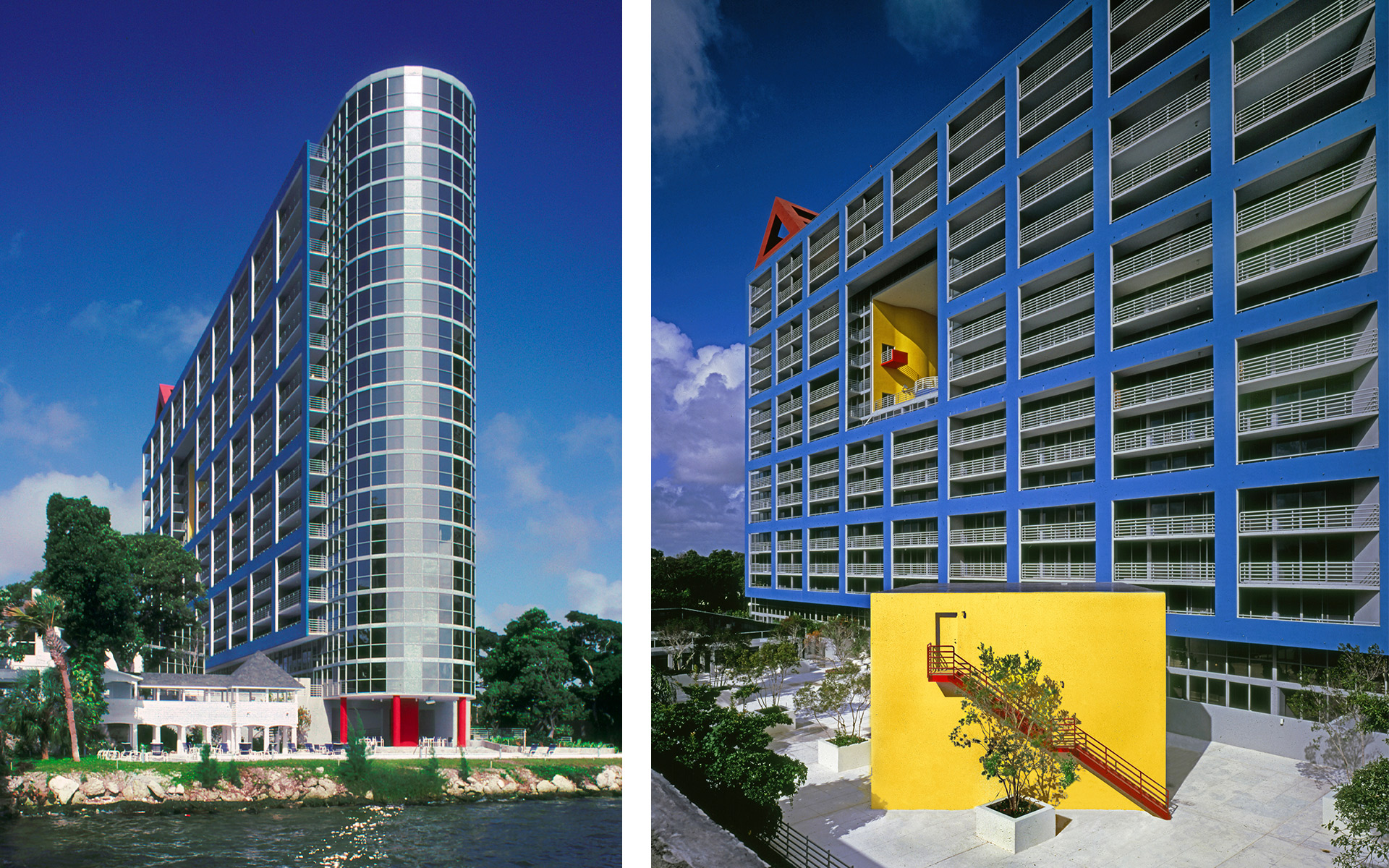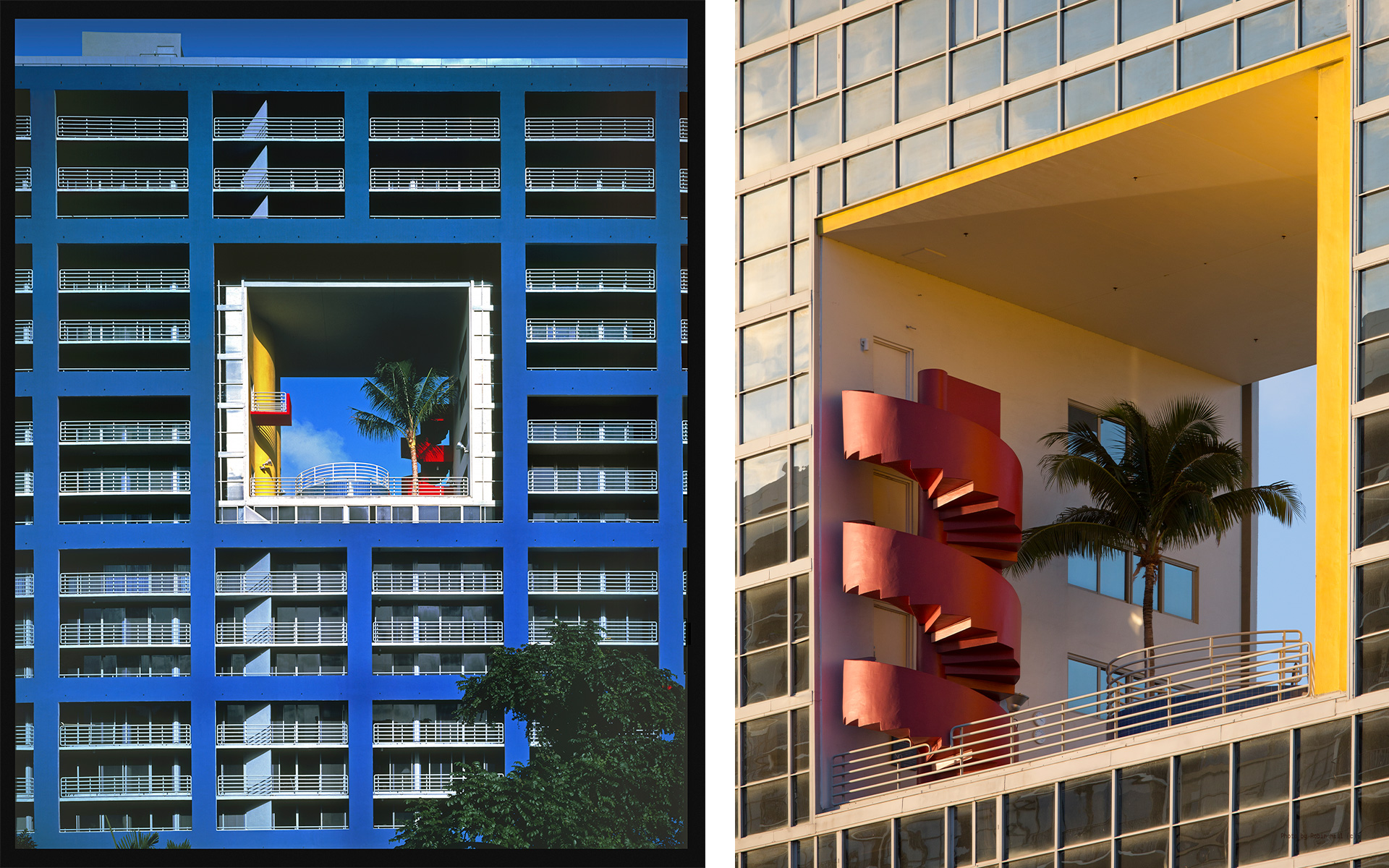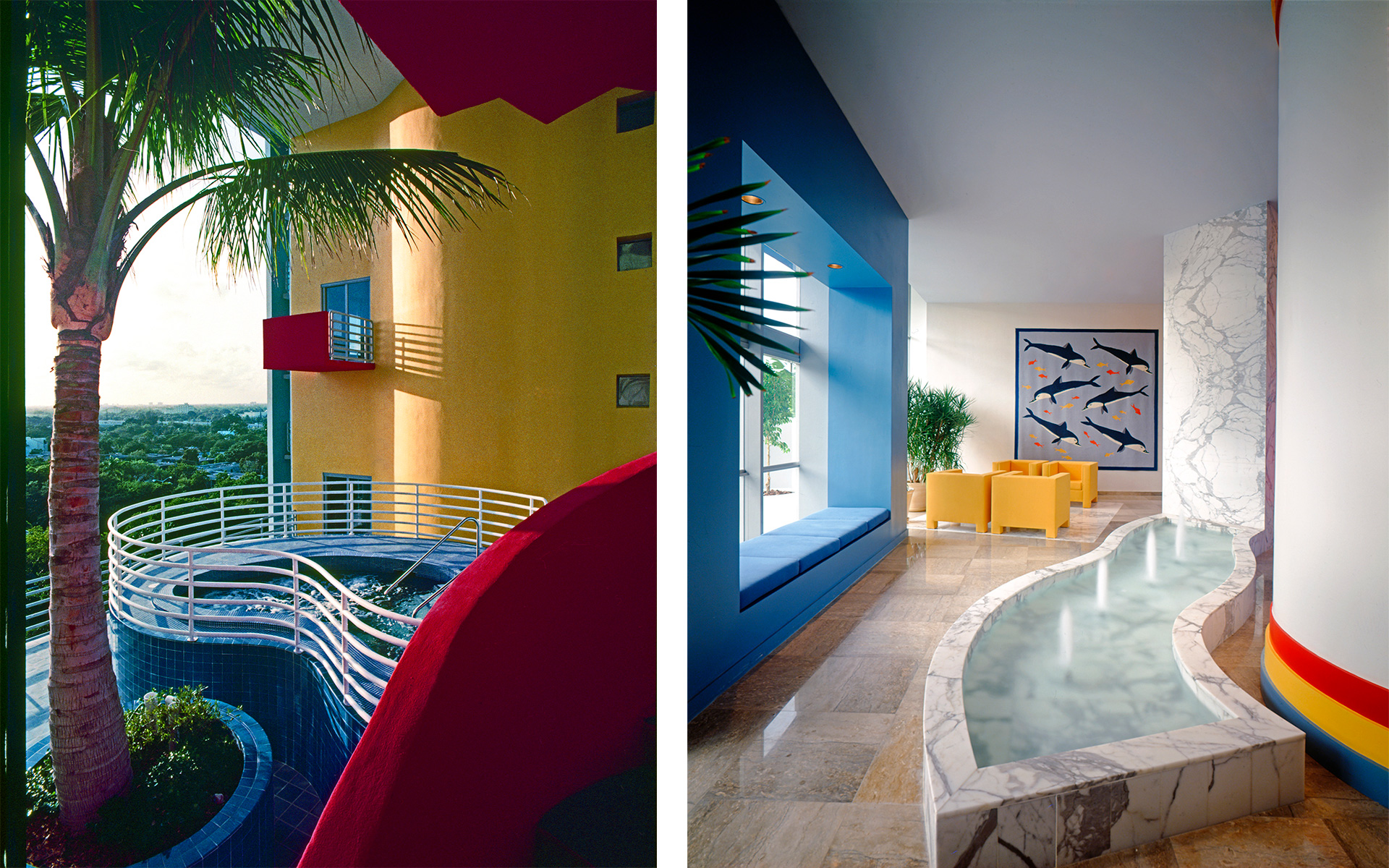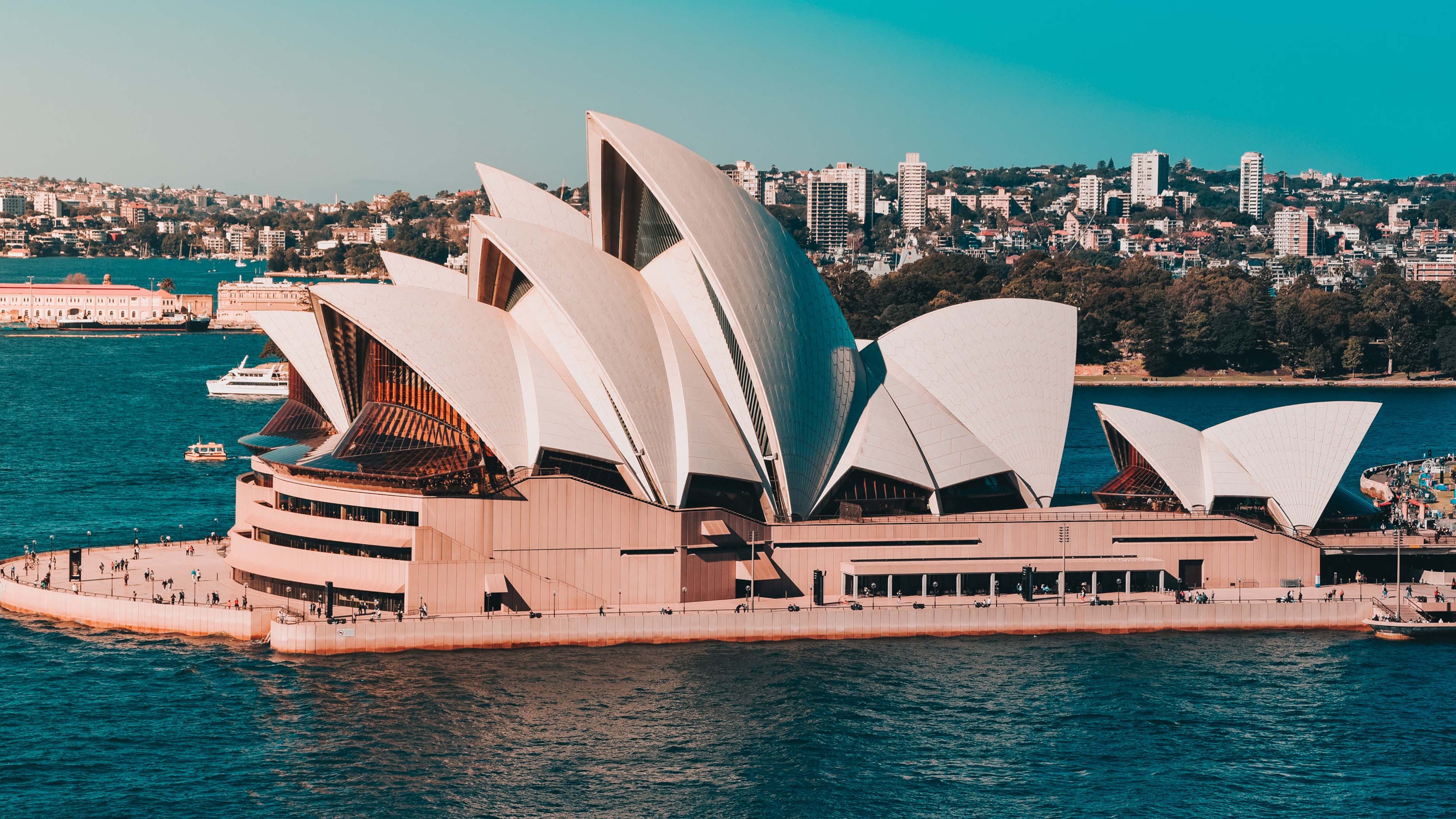
Photos by Norman McGarth
As if on cue, the palm tree branches start swaying outside Bernardo Fort-Brescia’s Miami offices as the co-founder of Arquitectonica talks about his Atlantis condominium building on the city’s Brickell Avenue.
Over a video call, beaming from behind his desk, Fort-Brescia is describing how in his design he planted a palm tree, the symbol of Florida, right in the centre of a unique, colourful building – bringing an end to an era of vanilla, beige developments.
Opened 40 years ago in 1982, the Atlantis also put the city on the international stage, largely thanks to 1980s cult TV show Miami Vice. It is the building that resurrected a city, which in 1981 was statistically the murder capital of the US, but today Time magazine has included in a list of the greatest places in 2022.
When asked about the impact of his building, that also sent the fledging architectural practice into the stratosphere, Fort-Brescia will only comment modestly: “Let me put it this way – people think this put Miami on the architectural map. The building was written up everywhere, plus it was on television.”
Others are more direct on the Atlantis’ influence: “Art and design are [now] two of most important factors in Miami residential architecture,” says Tim Gifford FRICS, senior managing director at CBRE Capital Advisors Latin America. “Buyers want to live in iconic designed works of art and Miami is a highly aspirational market which requires differentiation in building design and/or design as a form of branding.”

Atlantis’ impact is put into context when reflecting on Miami of the late 1970s and into 1980. “There were very violent race riots, people were killed, the Mariel Boatlift occurred with up to 125,000 people arriving in boats from Cuba and we had the tragic recurring event of the bodies of Haitian boat people washing up on shore,” says Miami Herald urban affairs writer, and Miami resident of 40 years, Andres Viglucci. “It [1980] was an awful year with all these events and it was the year Time did a cover feature on Miami called: Paradise Lost – the idea being this was a geriatric city and that we were done for: there was no hope.”
“Then, two years later up pops this thing, the Atlantis condominium - and it started to change people’s idea about this dying city because [the building] had such confidence that seemed to come out of nowhere.”
Where it came from was the collective thoughts of a group of Ivy League architecture graduates from Harvard, Yale, and Princeton that included Fort-Brescia, who were enticed to Miami for "a real adventure. It happened to be a moment in history when the city was changing. It was an opportunity to be creative,” says Fort-Brescia.
An instigator of that change was the city’s visionary mayor at the time, Maurice Ferre, who was pushing his idea of urban living. Like other large US cities, Miami was suburban, and ghostly after 5pm. Ferre started to rezone the city, including Brickell Avenue. The north end of Brickell was financial, but the southern end, home of the Atlantis, was residential with long narrow plots of land that ran from the avenue with private waterfront mansions.
Having gained notice with their first building in Miami, the Pink House, Arquitectonica was hired to redevelop a site which had belonged to Alfreda Mitchell, granddaughter of Charles L Tiffany, founder of Tiffany & Co jewellery, and her husband Hiram Bingham III.
But the site was sold and another developer came aboard, pushing the Arquitectonica drawings aside. Then new developers, Sol Luger and Sam Greenberg, holocaust survivors who had moved to Montreal, Canada, bought the land, and rehired the young architects. “[Sol and Sam] saw the designs we had done years before … and they said, ‘whoa, we should do that!’ They trusted us.”
“The Atlantis condominium … had such confidence that seemed to come out of nowhere” Andres Viglucci, Miami Herald

The slim size of the site meant the building was only 37ft wide. “But it made it interesting because we started exploring new ideas,” says Fort-Brescia. These ideas included moving away from the city’s penchant for plain buildings, designing the Atlantis like a Spanish villa on its side.
A blue grid recreates traditional streets, the famous central hole is the town square, with greenery represented by the palm tree, the swimming pool was the town centre fountain, while the red triangle on top, what Fort-Brescia calls ‘the symbol of the city – a red roof,’ was hiding mechanical cooling towers. It was making the most of light on the north side, while ventilation was coming from the wind in the south.
“We were designing for two audiences; those who lived inside, and those outside,” says Fort-Brescia. “A high-rise is a building you also experience from afar: in a boat, sailing; on the expressway … we thought it had that graphic power to be understood easily from [a distance]. It was a billboard from the highway: you could see it and think about it.”
The effect on the city was almost immediate. “It attracted a lot of attention locally and started to change the idea of Miami as this geriatric place: suddenly it was young, hip, and design became a thing. That architecture could start to define the city in a new way,” says Viglucci.
Such was the importance of the building that its only renovation, and replacement of the overgrown palm tree, made state-wide news. Viglucci’s October 2005 Miami Herald article was headlined ‘Condo symbolising the new Miami gets renovations and a new palm for its perch.’
“It happened to be a moment in history when the city was changing. It was an opportunity to be creative” Bernardo Fort-Brescia, Arquitectonica
The Miami Vice effect
Epitomising the saying ‘no publicity is bad publicity,’ is the effect cult TV series Miami Vice had on not just the down-at-heel city, but on Arquitectonica. Running for five series, and 113 episodes, from 1984 to 1989, the programme featured glamourous cops, tackling Miami’s growing narcotics trade with South America. Not usually a great showcase for any city, let alone a new architecture business.
But Miami Vice was a global TV hit, pulling in a peak of 22m viewers in the US alone. Those eyes were all on a changing city, and for Arquitectonica, they were on the Atlantis, used prominently in the opening credits.
Fort-Brescia is reverential about the Miami Vice effect. “[Atlantis] was on the cover of every magazine. But TV – my god! The world is seeing this building.” While Miami Vice also has a negative connotation because of the drug connection and dealing, Fort-Brescia says there was a double effect: “The building became very well known, but also it associated us with that world, that style. Some people saw the art, others saw the symbolism of Miami, in that era of dark drugs. It did have some positive and negative effects.”

The impact on Arquitectonica, happened even during the building’s construction. “As Atlantis was being built, people were looking at it and within a year we had a 40-storey building, the Palace [on Brickell, opened in 1981] for Harry Helmsley, the owner of the Empire State building,” says Fort-Brescia.
Now the building is being slowly cloaked in an ever-growing canopy of greenery on Brickell Avenue. Symbolically, it is morphing into the myth of its Atlantis namesake, the fabled sunken metropolis.
“All you see [today] are flashes of [the building] as you are driving,” says Viglucci. “There’s no access to the place, and in terms of the local prominence, the regular person on the street, probably doesn’t know the building.
But, Viglucci adds: “Atlantis has held up well, and when you stop and see it, glimpse it through the trees, it still pops.”
“Buyers want to live in iconic designed ‘works of art’ and Miami is a highly aspirational market which requires differentiation in building design” Tim Gifford FRICS, CBRE Capital Advisors Latin America


